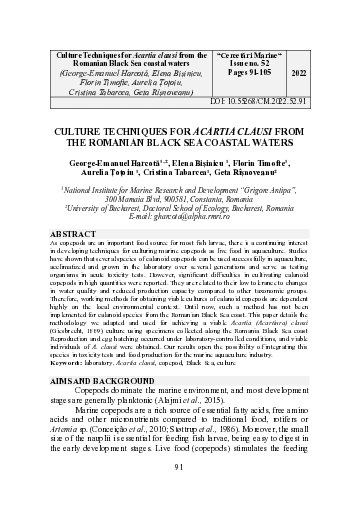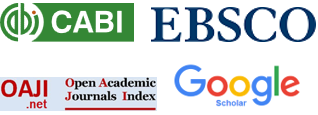Culture Techniques for Acartia clausi from the Romanian Black Sea coastal waters
DOI:
https://doi.org/10.55268/CM.2022.52.91Keywords:
laboratory, Acartia clausi, copepod, Black Sea, cultureAbstract
As copepods are an important food source for most fish larvae, there is a continuing interest in developing techniques for culturing marine copepods as live food in aquaculture. Studies have shown that several species of calanoid copepods can be used successfully in aquaculture, acclimatized and grown in the laboratory over several generations and serve as testing organisms in acute toxicity tests. However, significant difficulties in cultivating calanoid copepods in high quantities were reported. They are related to their low tolerance to changes in water quality and reduced production capacity compared to other taxonomic groups. Therefore, working methods for obtaining viable cultures of calanoid copepods are dependent highly on the local environmental context. Until now, such a method has not been implemented for calanoid species from the Romanian Black Sea coast. This paper details the methodology we adapted and used for achieving a viable Acartia (Acartiura) clausi (Giesbrecht, 1889) culture using specimens collected along the Romania Black Sea coast Reproduction and egg hatching occurred under laboratory-controlled conditions, and viable individuals of A. clausi were obtained. Our results open the possibility of integrating this species in toxicity tests and food production for the marine aquaculture industry.
Downloads
Published
How to Cite
Issue
Section
License
This is an open access journal, which means that all content is freely available without charge to the user or his/her institution. Users are allowed to read, download, copy, distribute, print, search, or link to the full texts of the articles, or use them for any other lawful purpose, without asking prior permission from the publisher or the author. This is in accordance with the BOAI definition of open access.





